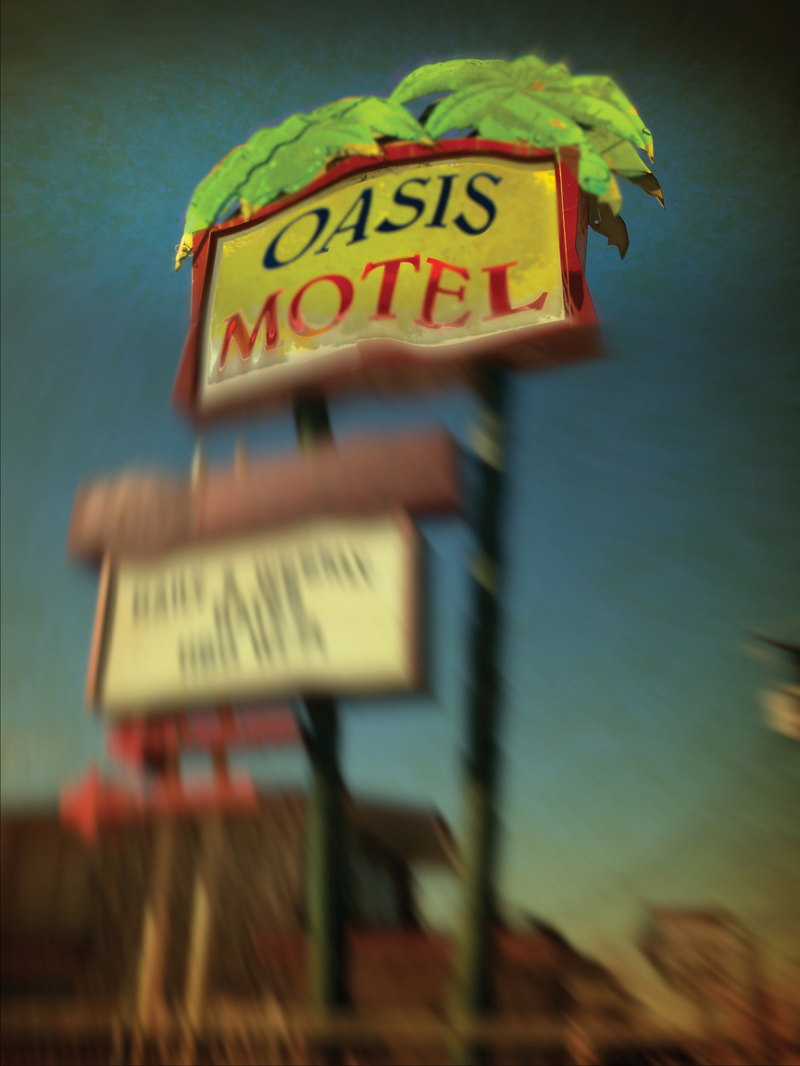
It was 1953
and the year of the grandest family vacation ever. Mom and Dad had planned for us to make a trip from Jackson, Miss., to Los Angeles to visit my grandmother, who was working as a practical nurse there. It was a journey of almost 2,000 miles and would take five days, including the risks of crossing the vast desert – something never before attempted by either of my parents.
In addition to the three of us, there was my 3-year-old sister, my 6-month-old brother, and Bessie Mae – our nanny to help care for my little siblings. I, of course, would not need her. I was 10 and perfectly capable of taking care of myself.
Bessie Mae was black. I’ll explain why that’s important to the story in a minute.
Our means of transportation was a 1949 four-door Chevrolet. Mom and Dad would occupy the front seat; the rest of us were in the back.
I would claim the window seat behind Dad because I wanted to be sure to see everything. I had imagined that would include sights of great wonder as we crossed six states – all of which I would be viewing for the first time.
Sis was in the middle, and my brother was on Bessie Mae’s lap. Bessie Mae was somewhat broad in the hips, thereby creating a really tight fit for us, but that was just fine because the adventures that loomed were worth any degree of discomfort whatsoever.
It was August.
The Chevy had no air conditioner. There was the uncertainty of it holding up in the face of such an expedition. Especially for the more than half the distance that would include that foreboding desert, to say nothing of some mountains beyond it as the road led ever farther West.
So, Dad had figured a way to reduce the strain on the engine and the uncomfortable conditions inside the car for such a long trek that would take us along Highway 80 and Route 66.
The plan was simple: We would travel at night and sleep during the daytime hours.
“But wait,” I remember exclaiming upon hearing this, “I can’t see anything AT NIGHT!” Dad’s answer was to assure me that there would be some things to see before we found the first motel right after the sun came up.
I remember having consoled myself by figuring that maybe that would be okay because I could spend some time in the motel pool since no one else would be swimming AT DAWN!
“No, son,” he replied, “there will be no time for swimming since we will be going straight to bed as soon as we check in. We have to get our rest.”
The result of this plan
was that I would get to see only California, if we ever actually got there. But I might as well forget about finding out what Louisiana, Texas, New Mexico or Arizona looked like since I could see only that part of any of them illuminated by the Chevy’s headlights. And the pavement looked pretty much the same for all 2,000 miles of the ride.
I would, however, become familiar with lots of motels – many more than the ones we actually occupied. That was because we had to find accommodations that met several criteria: Was the room affordable, did it have sufficient bedding, and was there a kitchenette so Mom could fix something for us to eat? Then, the big one – would Bessie Mae be allowed in the room with us? Remember, I mentioned she was black. And, it was 1953.
So the routine was to pull up to a motel or motor court that looked promising. Mom and Dad would go inside the office while the four of us waited in the car wondering if we would be staying.
I clearly remember looking out of that side window at whatever I could see – the row of rooms, the pool I would never enter and the motel sign looming overhead.
Fast forward about 15 years.
Sylvia and I moved to Arlington. Ever since then I’ve been passing the old Oasis Motel on Division Street. I’ve always thought its neon sign featuring two Palm trees looked very familiar. I’ve remembered looking through my 10-year-old eyes and seeing that very sign at the end of the first day’s (I mean night’s) travel. It was about 10 hours or so away from home and very likely where I slept that day – in Arlington.
For the first time.
















